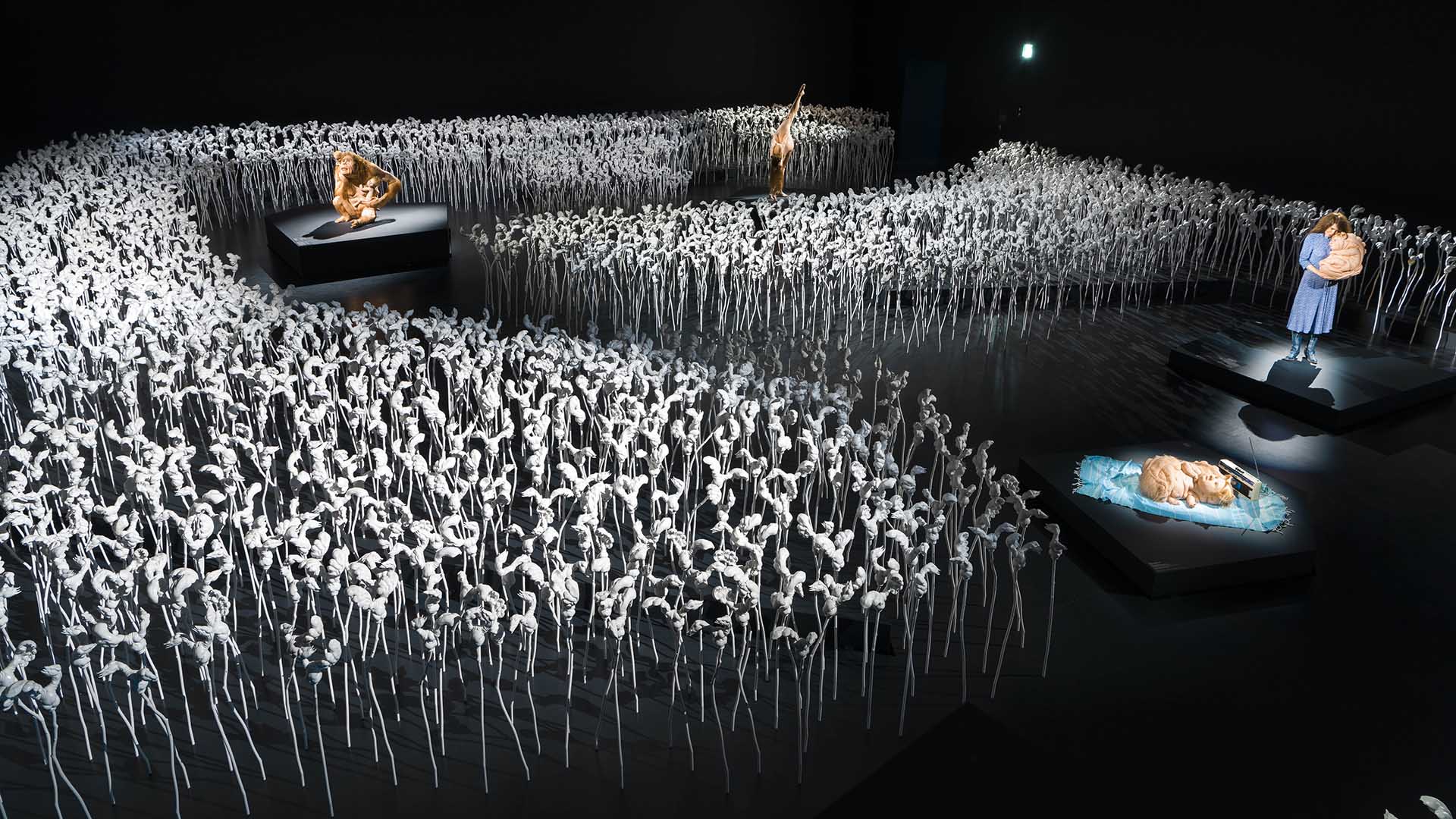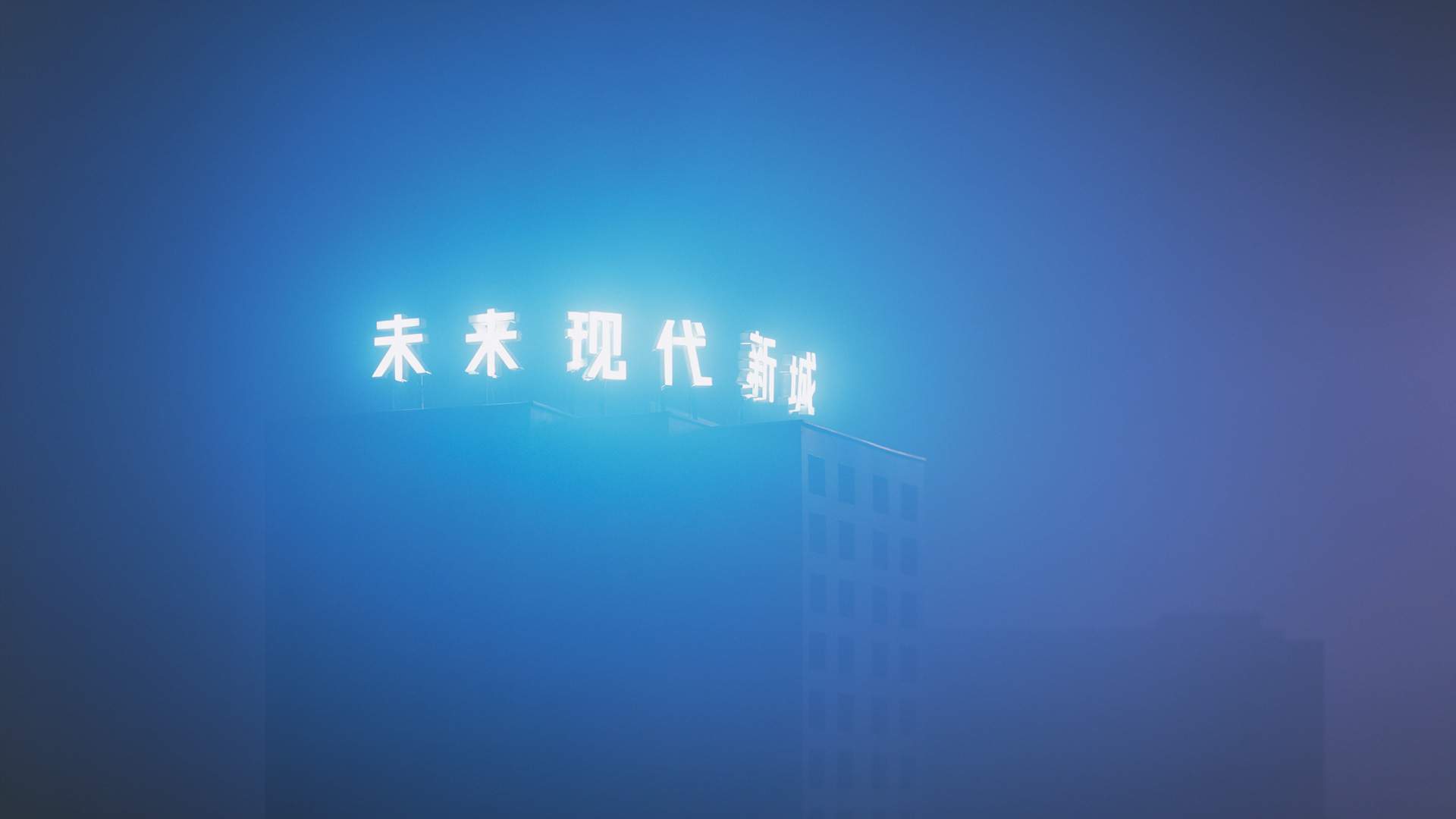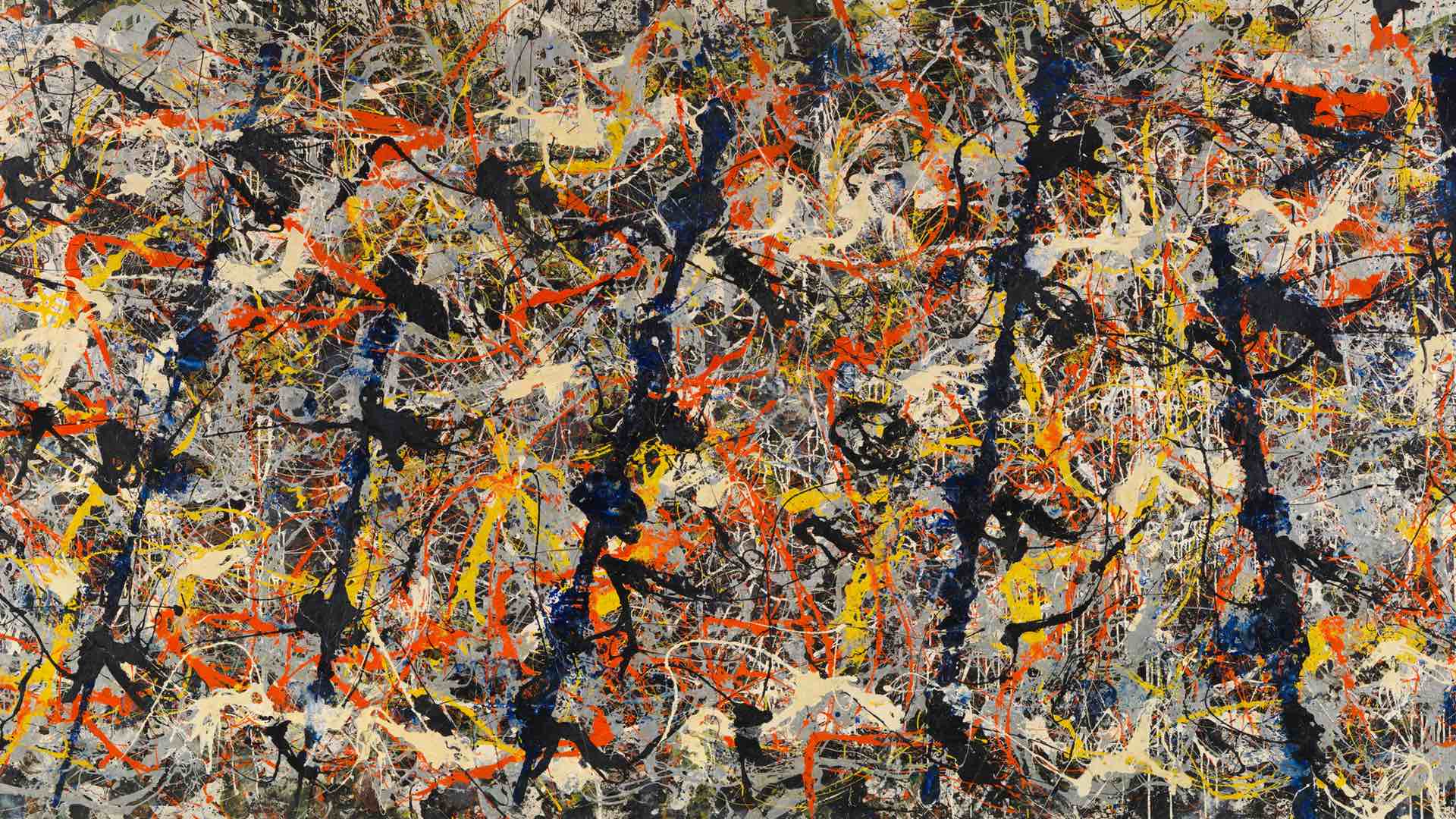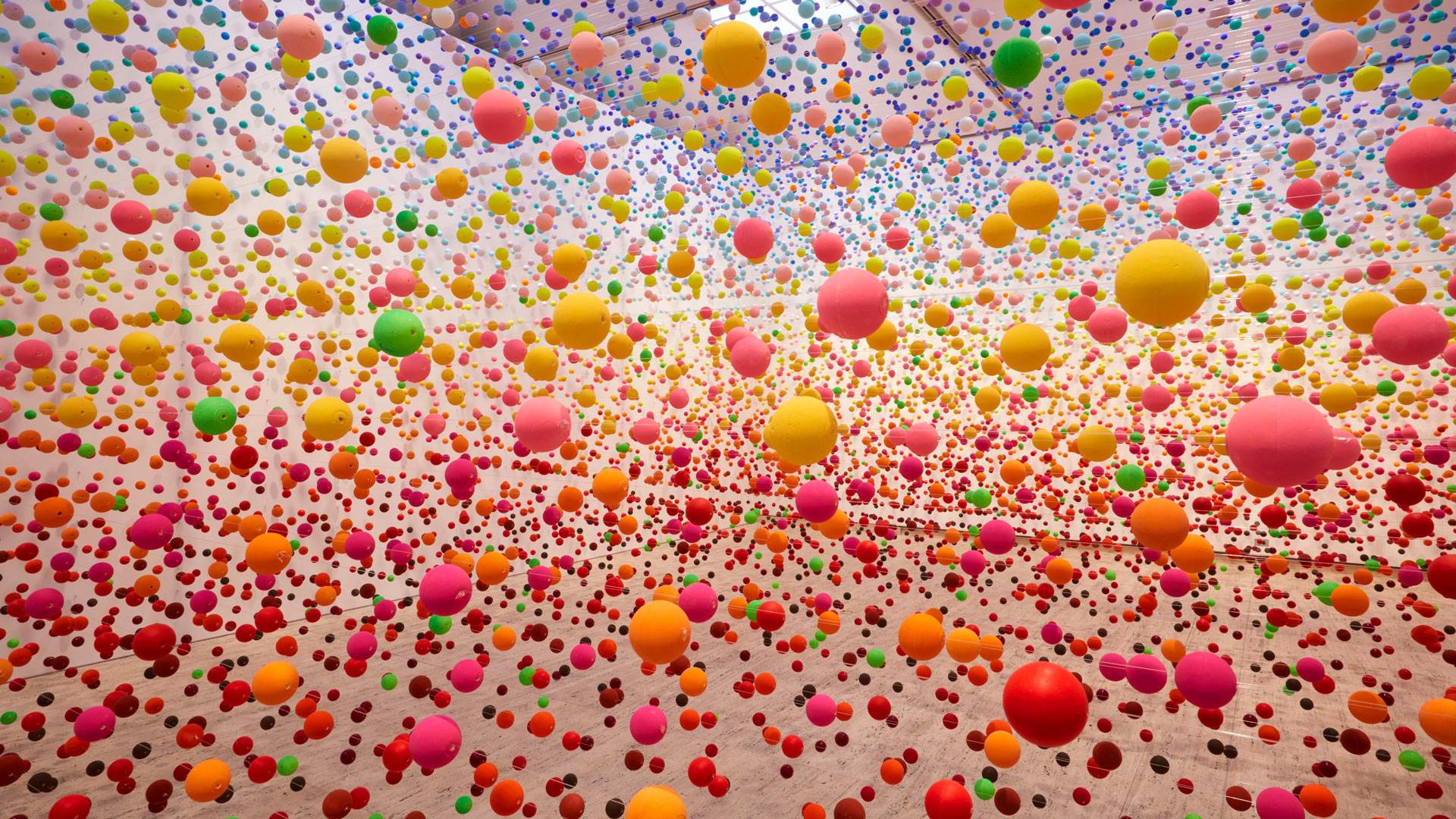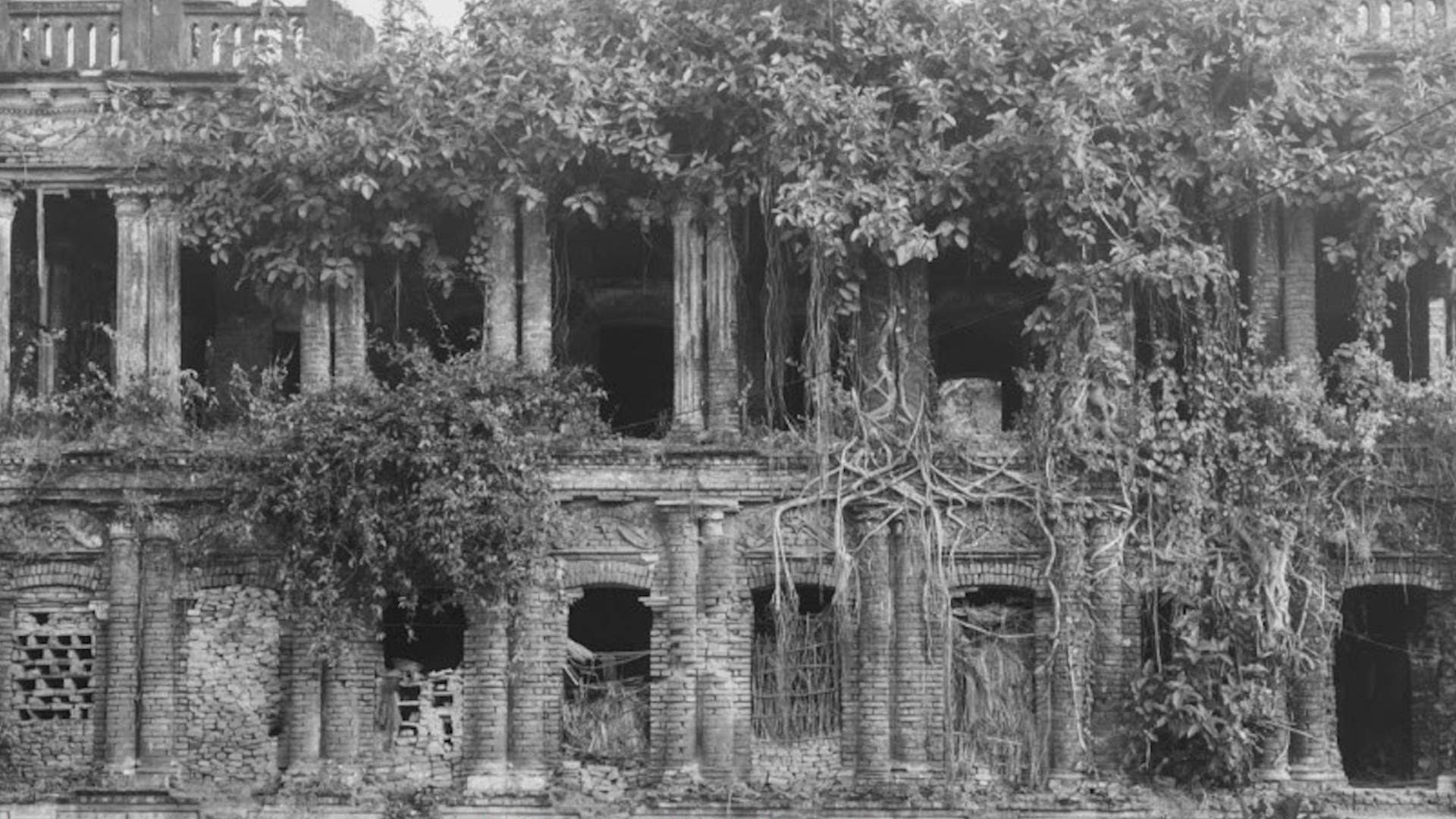Eight Supernormal Exhibitions to See in Sydney This Spring
Explore everything from the natural to the supernatural, including the Australian Geographic's best photos, Patricia Piccinini's field of fake flowers and White Rabbit's new show.
Eight Supernormal Exhibitions to See in Sydney This Spring
Explore everything from the natural to the supernatural, including the Australian Geographic's best photos, Patricia Piccinini's field of fake flowers and White Rabbit's new show.
The arrival of spring might have you wanting to frolic through a field of flowers — and you can do just that at Carriageworks this month as it hosts Patricia Piccinini's mesmerising field of flowers. The installation might not replicate the smells and colours of a real field of blooms, but it's a pretty special experience in itself. It's coming down from Brisbane where it was on display at GOMA and will only be in town for four days, so don't miss it.
But even if you do, there's still lots of art to get amongst. White Rabbit's new show Supernatural kicks off on September 7, the Art Gallery of NSW currently has a sensory show on display and the MCA is giving you the opportunity to get to know up-and-coming Chinese artist Sun Xun before the rest of the world. On top of that you can also catch works by Andy Warhol, Sol LeWitt and James Turrell if you're willing to take a road trip down to Canberra.
-
8

The ancient Chinese believed that mountains and caves were the dwelling places of gods and immortals. Painters imbued their landscapes with a sense of sanctuary, with towering mountains, misty waterfalls and crystal clear rivers echoing the presence of divine energy, a harmonious balance of yin and yang. Compare this to the landscape contemporary Chinese artists experience in a dazzling modern country of mega cities: everything high speed, high tech — and high pollution. This contrast is at the heart of White Rabbit’s newest exhibition, Supernatural.
In an incredibly rich and diverse show, artists work across a variety of mediums including painting, photography, video and sculpture. Several artists employ contemporary takes on traditional ink and brush techniques, such as Song Ling, Emily Shih-Chi Yang and Wu Chi-Tao, the latter whose series of 12 albums depicting the fragile landscapes of Taiwan’s coast, threatened by modern day urbanisation, reflect his expert knowledge of Song and Ming Dynasty masters’ ink paintings (he even grinds his own ink). You’ll also see less traditional approaches to landscape, like Huang Zhen’s knitted wire mountains, Feng Yan’s large-scale photographs of rocks and Zhou Xiaohu’s dystopian video Garden of Earthly Delights, inspired by the Hieronymus Bosch painting of the same name. Marionettes based on characters from Bosch’s painting act out fables of Daoist philosopher Zhuangzi in a work that acts as “a cautionary tale for a world on the brink of environmental catastrophe”.
-
7

In one of the biggest Australian art exhibitions of the year, Patricia Piccinini’s weird and wonderful creations took over an entire floor of Brisbane’s Gallery of Modern Art. Among its many eye-catching delights, a massive room packed with more than 3000 flower sculptures proved the undoubted centrepiece — and it’s coming to Sydney.
Called The Field, Piccinini’s immense installation turns the gallery space into a flora-filled landscape, both immersing viewers in its sheer size and asking them to peer deeper at each of the individual sculptures that comprise the artwork. From September 13–16, Sydneysiders will get the chance to walk through and stand inside its wonders at Carriageworks as part of this year’s Sydney Contemporary. Given that The Field has never been seen outside of Brisbane, it’s a rather big deal — and the version coming to Sydney will be re-imagined to specifically adapt to its new location, Carriageworks’ Elston Room.
As well as The Field, Sydney Contemporary will present works from more than 70 Australian and international galleries, spanning six continents and including artists from 32 countries. If you’re keen to get a look at Piccinini’s piece, prepare to have company — over the past three years of SCAF, more than 60,000 visitors have attended.
-
6

Jackson Pollock’s Blue poles (1952), Sol LeWitt’s Wall drawing No. 380 a-d (1982) and Jon Schueler’s The first day (1956), as well as works by Andy Warhol, James Turrell, Yoko Ono and Mark Rothko will all be available for your viewing pleasure this spring. The world-famous works will take over Canberra’s National Gallery of Australia for American Masters 1940–1980, a free blockbuster exhibition showing more than 150 works by over 70 artists.
Every piece comes from within the NGA, which impressively holds one of biggest collections of post-war American art outside of the US. Most purchases were made back in the 1970s and 80s, under inaugural director James Mollison — before the gallery’s 1982 opening — and, at the time, were considered rather controversial. The show takes you on a chronological journey, beginning with abstract expressionism, which spawned Pollock, Rothko, Willem De Kooning and Frank Stella, before moving onto its many progeny, from colour field and pop to photo-realism and conceptual art.
-
5

Emerging out of China as one of the nation’s up and coming artists, Sun Xun is headed to the Museum of Contemporary Art for his first ever Australian solo exhibition. He’s best known for his intricate animations made from thousands of ink paintings, charcoal drawings and woodcuts, which will take over the MCA’s level one North and South galleries.
For this special exhibition, Xun has created a enormous 40-metre-long bark paper painting from a series of woodcuts. His handmade films, often littered with sporadic dialogue, combine text, sound and images to explore concepts about truth and memory, as well as history, culture and politics.
-
4

This July, the AGNSW dives deep into its massive collection to presents some of its favourite large-scale installations — some of which haven’t been displayed for years. With installations made from light, sound, spices, fabric and air, Spacemakers and Roomshakers showcases some rarely seen works, with visitors set to have their senses accosted by the holistic creations on display.
Highlights include Brazilian Ernesto Neto’s Just like drops in time, nothing (2002), which uses fabrics infused with masses of aromatic spices to attack your senses. The installation is overwhelming — purposely — as it combines its floor-to-ceiling size with intense smells. Also on display is Australian Nick Savvas’ Atomic: full of love, full of wonder (2005), which interlinks thousands of coloured balls to create a ‘shimmering haze’. Reflecting on the fundamental role of atoms as building blocks, Savvas was inspired to create the work after living in dreary London and recalling what Australia’s red earth looked like. Alongside video art, ‘alien toy’ collages and more, Spacemakers and Roomshakers invites AGNSW visitors to be drawn into these carefully constructed and distinctive sensory worlds.
-
3

Travelling from Bengal to Iraq, to the Kimberley, Temporary Certainty explores the tensions between certainty and permanence and doubt and ephemerality through new works by Bangladesh-born Sarker Protick, and Kununarra artist Alana Hunt, and Kurdistan-born, Melbourne-based Rushdi Anwar. All three investigate interactions between identity, geography, political interventions and the passing of time.
Protick, in his work-in-progress Exodus (2015–ongoing), takes us to the decaying buildings and overgrown grounds of East Bengal’s abandoned feudal estates, which once belonged to rich, powerful Hindu jamindars (landlords). Also occupied with built environments are two works by Anwar. His video and sound installation Facing Living: The Past in the Present (2015) delves into Saddam Hussein’s dictatorship over Iraq, while We have found in the ashes what we have lost in the fire (2018) is his response to visiting a church in Bashiqa, Mosul, which lies in territory disputed over by the Kurdistan Regional Government and Iraqi government. Meanwhile, Hunt’s Faith in a pile of stones (2018), visits Lake Argyle, a freshwater reservoir 18 times the volume of Sydney Harbour, in Kununurra in the Kimberley. Built in 1971 for irrigation, the structure caused major changes to country belonging to Miriwoong, Gija and Malgnin people, including the drowning of places of significance.
-
2

This spring and summer you’ll be able to immerse yourself in the wilderness without leaving the city, when the Australian Geographic Nature Photographer of the Year exhibition takes over the Australian Museum. More than 100 photographs will transport you to spectacular scenery and put you eye-to-eye with Australian sea lions, New Holland honeyeaters and green sea turtles. As well as being completely captivating, the images show the incredible natural diversity of Australia, New Zealand, Antarctica and New Guinea.
To go beyond the images, head along to a night talk. On Thursday, September 6, finalist Kirsten Woodforth will be chatting about her photo Yellow-Tailed Black Cockatoo Preening and the impact of human destruction on animal habitats. On Thursday, October 11, catch Justin Gilligan discussing his photographing adventures, which have taken him to Lord Howe, Christmas and Cocos (Keeling) Islands. There’ll be opportunities, too, for you to improve your skills, thanks to a series of wildlife photography workshops, to be hosted by Daniel Smith of Digital Camera Warehouse. Both beginners and enthusiasts are covered.
-
1

Over his career, Australian painter John Russell developed a close friendship with Vincent van Gogh, taught Henri Matisse colour theory, dined with Claude Monet and — amazingly — was even temporarily stranded at sea with Auguste Rodin. It’s quite the trajectory — and one that earned Russell his place as a French Impressionist.
Now, the first major survey of Russell’s work in 40 years is at the Art Gallery of NSW. John Russell: Australia’s French Impressionist showcases more than 100 of the ‘lost’ impressionist’s paintings, drawings and watercolours drawn from major international and Australian art institutions and private collections. Fittingly, these are accompanied by works of his contemporaries: Claude Monet, Auguste Rodin, Henri Matisse and Vincent van Gogh.
Russell was one of our first truly international artists, but — compared to his contemporaries — largely flew under the art radar. So don’t worry if you hadn’t yet heard of him. This exhibition offers Sydneysiders an opportunity to engage directly with his time spent abroad, and his subsequent evolution as an artist, and they follow Russell’s journey through impressionism and experimentation with pure colour, right through to his later vibrant watercolours. Highlights include Russell’s 1886 portrait of Vincent van Gogh, as well as six of his blossom paintings from 1887, which are said to have inspired the famous Dutch painter.
Top image: Installation view ‘Patricia Piccinini: Curious Affection’ at Brisbane’s Gallery of Modern Art, 2018, featuring The Field 2018. Shot by Natasha Harth for QAGOMA.
